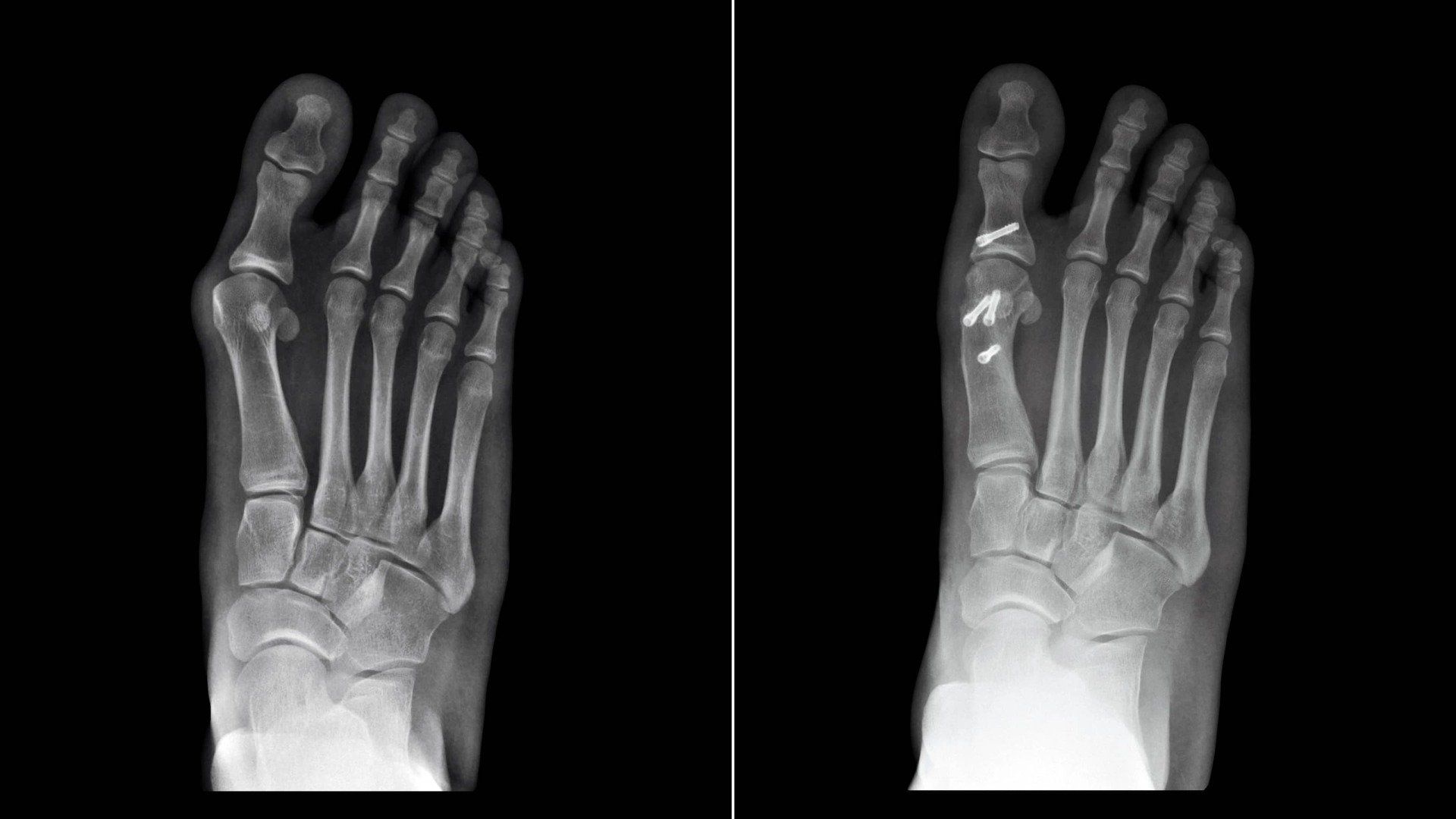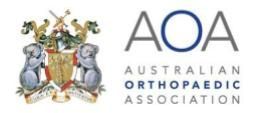Bunion Surgery
What is Bunion Surgery
Bunion Surgery (also referred to as Lapiplasty or Bunionectomy) is the only means of correcting a bunion.
Surgery is also recommended when conservative measures fail to treat the symptoms of bunion.
There are many surgical options to treat a bunion. The common goal is to realign the bones in the foot, correct the deformity, and relieve pain and discomfort.
Types of Bunion Osteotomy Surgery
Osteotomy is a common type of bunion surgery that involves the surgical cutting and realignment of the bones around your big toe. Your surgeon selects the appropriate surgical procedure based on the type of bunion and its severity. There are 3 common types of osteotomies used by foot and ankle surgeons.
Akin Osteotomy
Akin osteotomy corrects the sideways deviation of the big toe. In this procedure, your surgeon makes a small cut in the proximal phalanx (base of the big toe) and removes a wedge of bone to straighten the big toe. The bony fragments are then stabilized using a screw or staples. This procedure is often used in conjunction with the other procedures below.
Chevron Osteotomy
A chevron osteotomy is usually recommended for mild to moderate bunion deformities. During this procedure, your surgeon will make an incision over your big toe. The joint capsule is opened and the bunion is removed using a surgical saw.
A V-shaped cut is made on your big toe and the metatarsal bones are shifted to bring your toe into its normal anatomical position. The bunion is then shaved and the soft tissues are realigned to correct the position. The mobility of your big toe is examined, and the capsule and wound are re-approximated with sutures. Screws or pins are used to hold the bones in their new position until healing.
Scarf Osteotomy
Scarf osteotomy is usually recommended for moderate to severe bunion deformities. Your surgeon will make an incision along your big toe and open the joint capsule to expose the bump. The bump on your big toe is then removed using a bone saw.
Your first metatarsal bone is then cut in a Z shape and realigned to correct the deformity. Your surgeon will fix the cut bone with pins or screws. The joint capsule and surgical wounds are then reapproximated using sutures keeping your toe in a straight position. This is a very powerful corrective procedure with excellent long term results.
Cheilectomy and Arthrodesis for Bunion (Hallux-Rigidus)
Cheilectomy is a surgical procedure, performed to remove a bony lump from the big toe of the foot in a medical condition known as Hallux-Rigidus. This bony lump develops on the first metatarsophalangeal joint, which is the main joint of the big toe.
Arthrodesis: Involves fusing the two bones that form the big toe joint. This procedure is used for severe bunions / stiff toe and when arthritis has set in. The movement of your big toe is reduced following this procedure but pain and deformity are very well controlled.
Preparation for Bunion Surgery
Once you and your surgeon have decided that surgery is required, preparation is necessary to achieve the best results and a quick and problem free recovery.
- Infections - Treat any tooth, gum, bladder or bowel problems before surgery to reduce the risk of infection
- Smoking - Stop or cut down smoking to reduce your surgery risks and improve your recovery
- Weight - Consider losing weight (if overweight) before surgery
- Medications - refer Medication Information below
- Fast beforehand - Depending on the type of anaesthesia you'll be receiving, your doctor may advise you to refrain from eating and drinking six to twelve hours before the procedure.
- Arrange for a ride - You will not be allowed to drive yourself home after the procedure, so make arrangements for someone to pick you up. If you live alone, arrange for someone to check on you that evening or, ideally, to stay with you for the rest of the day.
Returning Home After Bunion Surgery
When you go home you need to take special precautions around the house to make sure it is safe. Your post operative plans should include:
- Mobility or Stability - You may have to accommodate crutches, wheelchair or knee scooter and may need ramps for stairs
- Sleeping - modify your sleeping arrangements (especially if you are sleeping upstairs) for easy access
- Access - ensure you have easy access to food, water, medications and any other essentials
- Showering - You may require rails in your bathroom or a shower chair, and will and a specialised shower bag to keep your foot dry
Assess your home situation to ensure you have adequate home support in the first few weeks following surgery. If you live alone it may be necessary to arrange a package of community care to help during the first few weeks at home.
Bunion Surgery Process
Bunion Surgery Rehabilitation Program
Risks & Complications Associated with Bunion Surgery
Surgical Follow Ups
How Can I Minimise Post Operative Complications
- Elevation - Keeping your foot/ankle elevated above your heart when sitting and sleeping will help with pain, swelling and help wound healing
- Blood clots (DVT or PE) - Through early mobilisation, stockings, and medications
- Pain - Keep on top of pain with regular use of pain medications as directed by your surgeon
- Dressings - Keep dressings dry and intact
- Shoewear - Keep your prescribed shoe (heel wedge, moonboot) on as instructed
- Let us know early if you have any questions or worries
What Are the Consequences of Surgery?
Sometimes the potential risks and consequences of your surgical procedure need to be weighed against the benefits of a successful surgical outcome.
These benefits can include:
- Freedom from pain
- Increased movement
- Greater flexibility
- Maintained independence
- Improved outlook
- Longer more enjoyable life








